Ottawa is Canada’s capital, in the east of southern Ontario, near the city of Montréal and the U.S. border. Sitting on the Ottawa River, it has at its centre Parliament Hill, with grand Victorian architecture and museums such as the National Gallery of Canada, with noted collections of indigenous and other Canadian art. The park-lined Rideau Canal is filled with boats in summer and ice-skaters in winter.
Ottawa is the political centre of Canada and headquarters to the federal government. The city houses numerous foreign embassies, key buildings, organizations, and institutions of Canada’s government, including the Parliament of Canada, the Supreme Court, the residence of Canada’s viceroy, and Office of the Prime Minister.
Ottawa has the most educated population among Canadian cities and is home to a number of colleges and universities, research and cultural institutions, including the University of Ottawa, Carleton University, Algonquin College, the National Arts Centre, the National Gallery of Canada; and numerous national museums, monuments, and historic sites. It is one of the most visited cities in Canada, with over 11 million visitors in 2018.
1.Rideau Canal
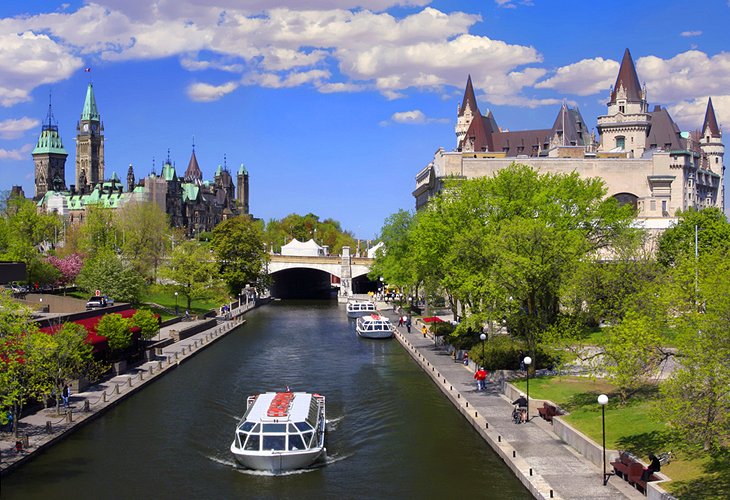
The Rideau Canal, also known unofficially as the Rideau Waterway, connects Canada’s capital city of Ottawa, Ontario, to Lake Ontario and the Saint Lawrence River at Kingston. It is 202 kilometres long.
The canal was opened in 1832 as a precaution in case of war with the United States. It remains in use today primarily for pleasure boating, with most of its original structures intact. The locks on the system open for navigation in mid-May and close in mid-October. It is the oldest continuously operated canal system in North America. In 2007 it was registered as a UNESCO World Heritage Site.
The 200-kilometer-long (but only 1.6-meter-deep) Rideau Canal, connects Ottawa with Kingston on Lake Ontario. Sometimes also called the Rideau Waterway, it was originally intended as a strategic route between Montréal and Lake Ontario, the military need for which was demonstrated during the war with the United States in 1812.
In summer, the canal and locks are an active waterway. Fun things to do include taking a Rideau Canal cruise aboard one of the many tour boats that ply the water here (better still, splash out on an overnight cruise of the canal!).
2.Canadian War Museum
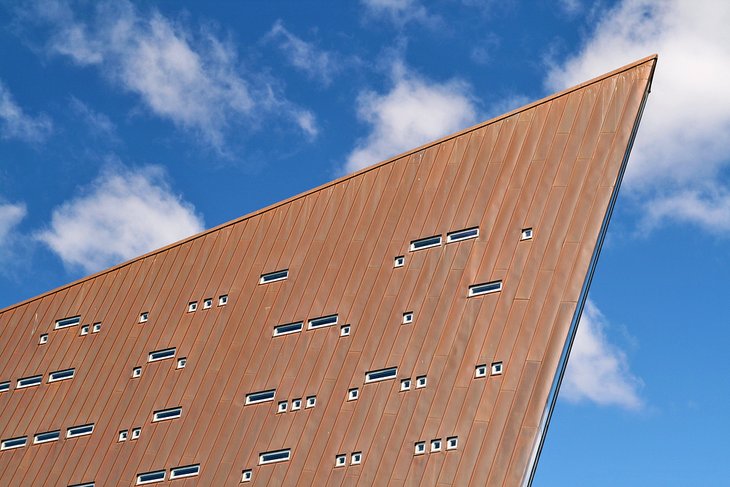
The Canadian War Museum is a national museum on the country’s military history in Ottawa, Ontario, Canada. The museum serves as both an educational facility on Canadian military history, in addition to serving as a place of remembrance.
The Canadian War Museum was formally established in 1942, although portions of the museum’s collections originate from a military museum that operated from 1880 to 1896. The museum was operated by the Public Archives of Canada until 1967, when the National Museums of Canada Corporation was formed to manage several national institutions, including the war museum. In the same year, the war museum was relocated from its original building to the former Public Archives of Canada building. Management of the museum was later assumed by the Canadian Museum of Civilization Corporation (later renamed the Canadian Museum of History Corporation) in 1990. Plans to expand the museum during the mid-1990s resulted in the construction of a new building at LeBreton Flats. Designed by Moriyama & Teshima Architects and Griffiths Rankin Cook Architects, the new Canadian War Museum building was opened to the public in 2005.
The museum’s collection contains over 500,000 pieces of materials related to military history, including over 13,000 pieces of military art. In addition to its permanent exhibition, the museum has hosted and organized a number of travelling exhibitions relating to Canadian military history.
3.Parliament Hill
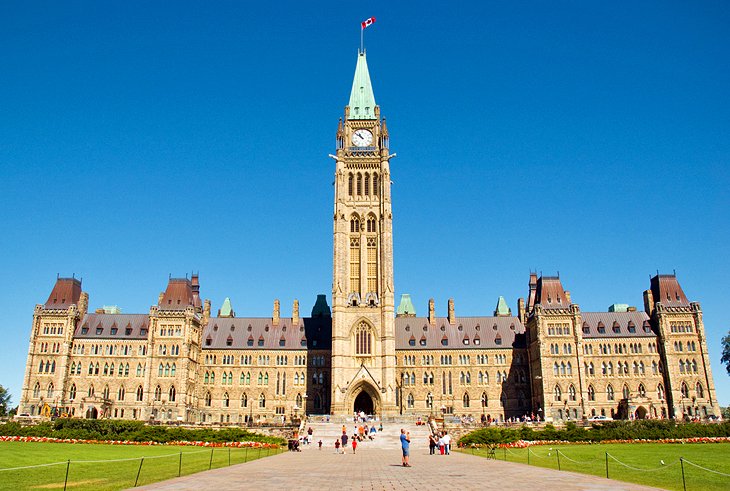
Parliament Hill, colloquially known as The Hill, is an area of Crown land on the southern banks of the Ottawa River in downtown Ottawa, Ontario, Canada. Its Gothic revival suite of buildings, and their architectural elements of national symbolic importance, is the home of the Parliament of Canada.
The Parliament Buildings, in all their splendor of Victorian Gothic sandstone, are quite an imposing sight on the 50-meter-high Parliament Hill (Colline du Parlement) looking out over the Ottawa River.
For hundreds of years, the hill served as a landmark on the Ottawa River for First Nations and, later, European traders, adventurers, and industrialists, to mark their journey to the interior of the continent. After Ottawa, then called Bytown, was founded, the builders of the Rideau Canal used the hill as a location for a military base,[3] naming it Barrack Hill. A large fortress was planned for the site following the War of 1812 and the Upper Canada rebellion, but the threat of an American invasion subsided, and the project was scrapped.
4.Peace Tower
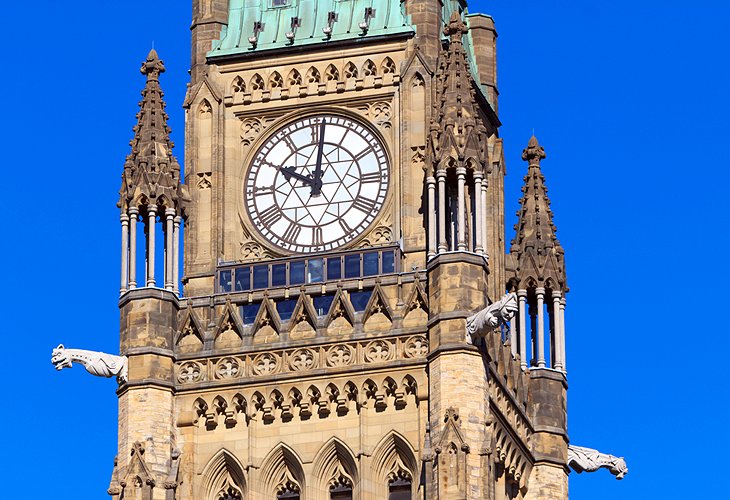
ThePeace Tower is a focal bell and clock tower sitting on the central axis of the Centre Block of the Canadian parliament buildings in Ottawa, Ontario.
The panoramic view from the observation deck at the top of the Peace Tower (Tour de la Paix), the highest point in Ottawa, encompasses Parliament Hill, the entire city, the river, Gatineau, and the hills to the north. On your way up in the elevator, you will get a look at the tower’s bells, and there is a memorial room to Canadians who died in WWI.
While access to the tower – sometimes also called the “Tower of Victory and Peace” – is free, you must first get a ticket. (Check the official government site below for details.)
Designed by Jean Omer Marchand and John A. Pearson, the tower is a campanile whose height reaches 92.2 m (302 ft 6 in), over which are arranged a multitude of stone carvings, including approximately 370 gargoyles, grotesques, and friezes, keeping with the Victorian High Gothic style of the rest of the parliamentary complex. The walls are of Nepean sandstone and the roof is of reinforced concrete covered with copper.
5.National Gallery of Canada
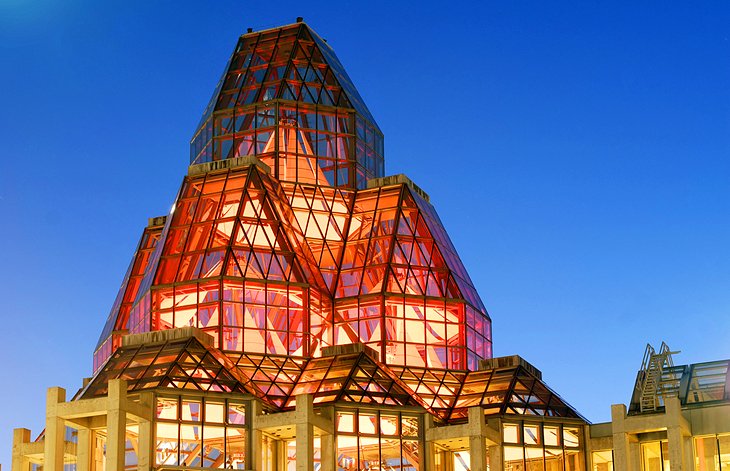
The National Gallery of Canada, located in the capital city of Ottawa, Ontario, is Canada’s national art museum. The museum’s building takes up 46,621 square metres, with 12,400 square metres of space used for exhibiting art. It is one of the largest art museums in North America by exhibition space.
Ultra-modern and designed by Moshe Safdie, the National Gallery of Canada (Musée des Beaux-Arts du Canada) is an architectural masterpiece with prism-like glass towers that echo the lines of the nearby Parliament Buildings. The glass contrasts with the mock medieval Château Laurier, yet the attraction still fits well into Ottawa’s cityscape.
Inside what is one of the largest art museums in North America, galleries display aboriginal art, trace the development of Canadian art from religious works to the Group of Seven, explore European Impressionism, and show temporary exhibitions. The rooms of Inuit art are on the lower level under the glass-encased Great Hall. Admission to this fine gallery is free Thursdays from 5pm – 8pm.
The museum’s permanent collection includes over 93,000 works from European, American, and Asian, Canadian, and Indigenous artists. In addition to exhibiting works from its permanent collection, the museum also organizes and hosts a number of travelling exhibitions.
6.Diefenbunker, Canada’s Cold War Museum
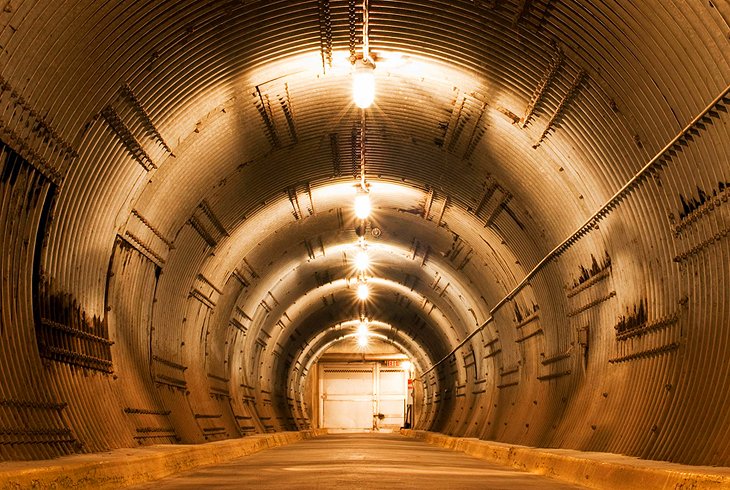
The Diefenbunker, formerly known by its military designation, Canadian Forces Station Carp, is a large underground four-storey reinforced concrete bunker and nuclear fallout shelter located in the rural area of Carp, Ontario approximately 30 km west of downtown Ottawa.
Canada’s Cold War Museum is located outside of Ottawa in a large underground facility that was constructed in the early 1960s to protect important functions of the Canadian government in the event of a nuclear war.
Irreverently known as the “Diefenbunker,” this structure is a powerful symbol of Canada’s response to the Cold War. Designed in the 1950s to withstand all but a direct hit by a nuclear weapon, it was intended to shelter key political and military personnel during a nuclear attack. Fortunately, it never served its intended purpose, although the Diefenbaker government made plans to retreat to its protection during the Cuban missile crisis of 1962. The bunker functioned as the hub of a communications network and civil defence system until it closed in 1994.
7.Notre-Dame Cathedral Basilica

The Notre-Dame Cathedral Basilica is a Roman Catholic minor basilica in Ottawa, Ontario, Canada located on 385 Sussex Drive in the Lower Town neighbourhood. It was designated a National Historic Site of Canada in 1990.
Opposite the National Gallery, Notre-Dame Cathedral is a beautiful Catholic basilica consecrated in 1846. It is particularly noted for the interior mahogany carvings by Philippe Parizeau and figures of the four evangelists, prophets, and apostles by Louis-Philippe Hébert.
The basilica is the oldest and largest church in Ottawa and the seat of the city’s Roman Catholic archbishop. Its twin spires and gilded Madonna are easily identifiable from nearby Parliament Hill and the surrounding area. The church was last renovated and restored in the late 1990s. Services are held in both French and English. Its Easter and Christmas masses are telecast nationally on Salt+Light Television every year.









